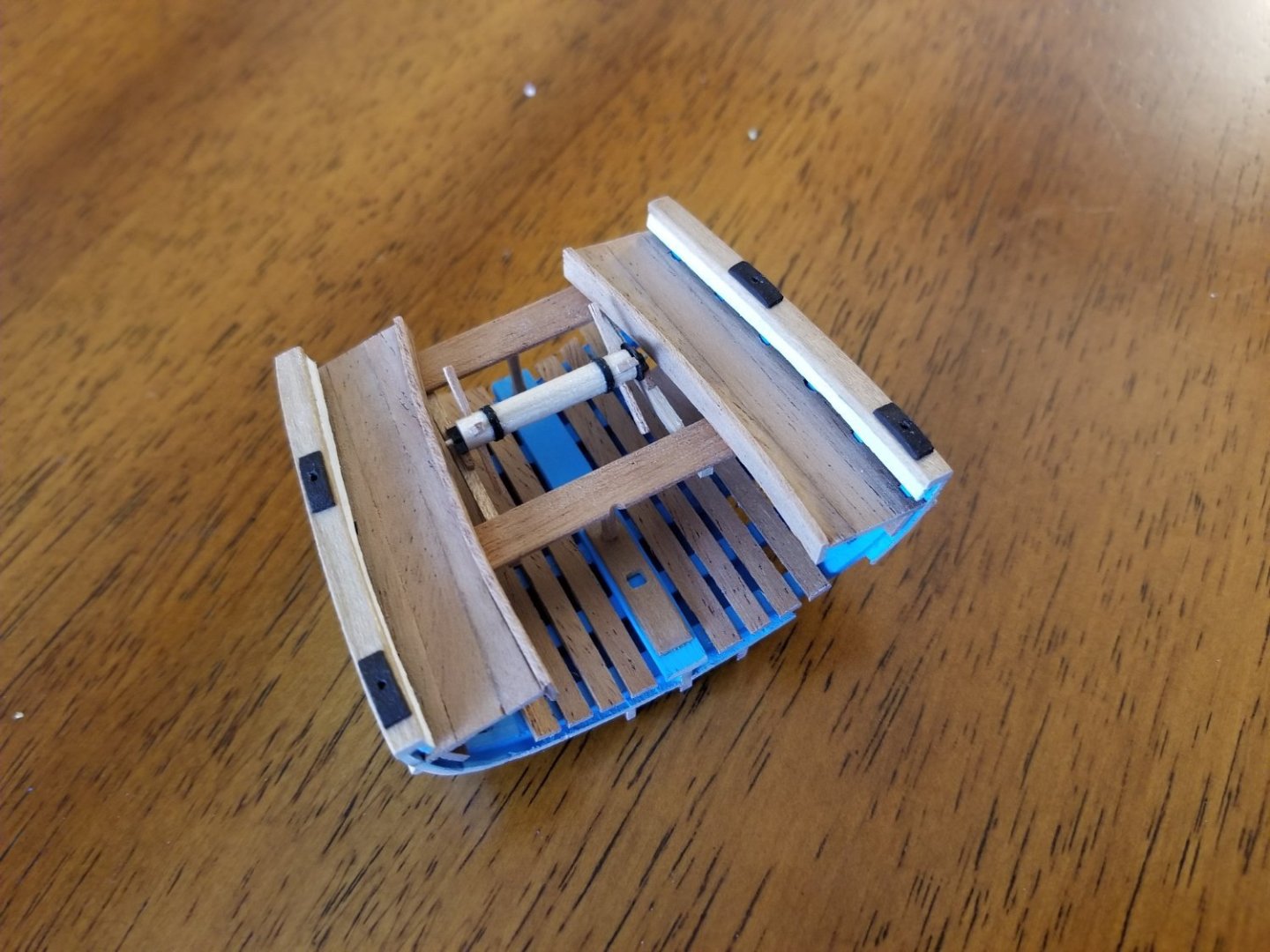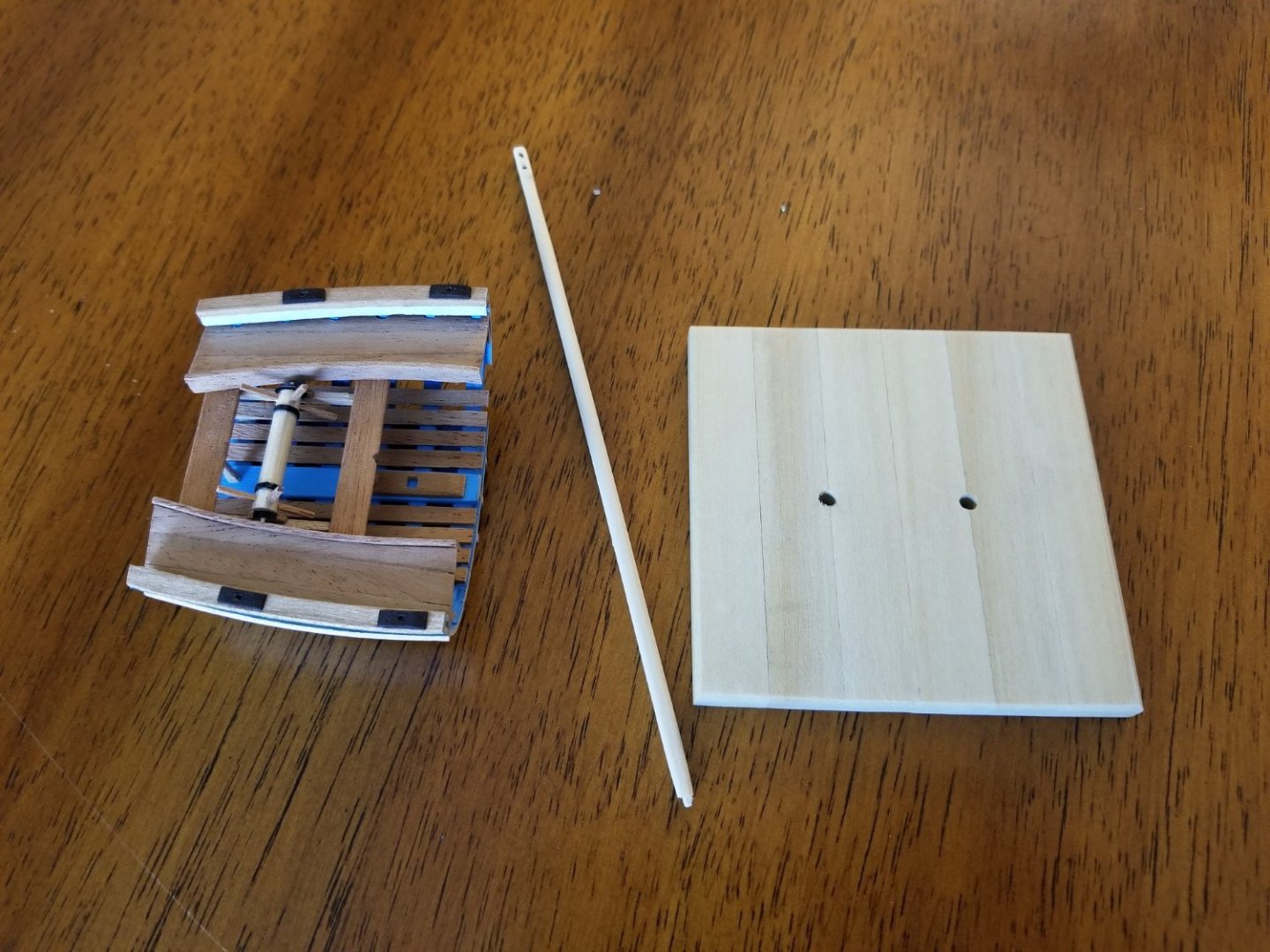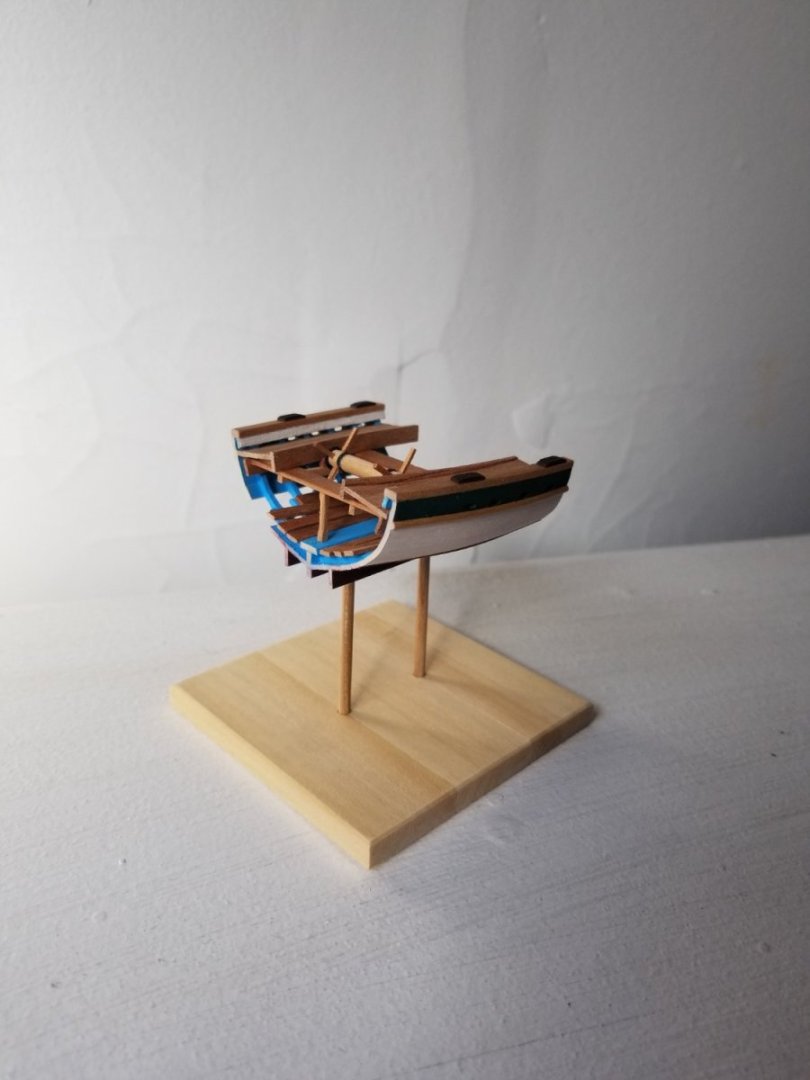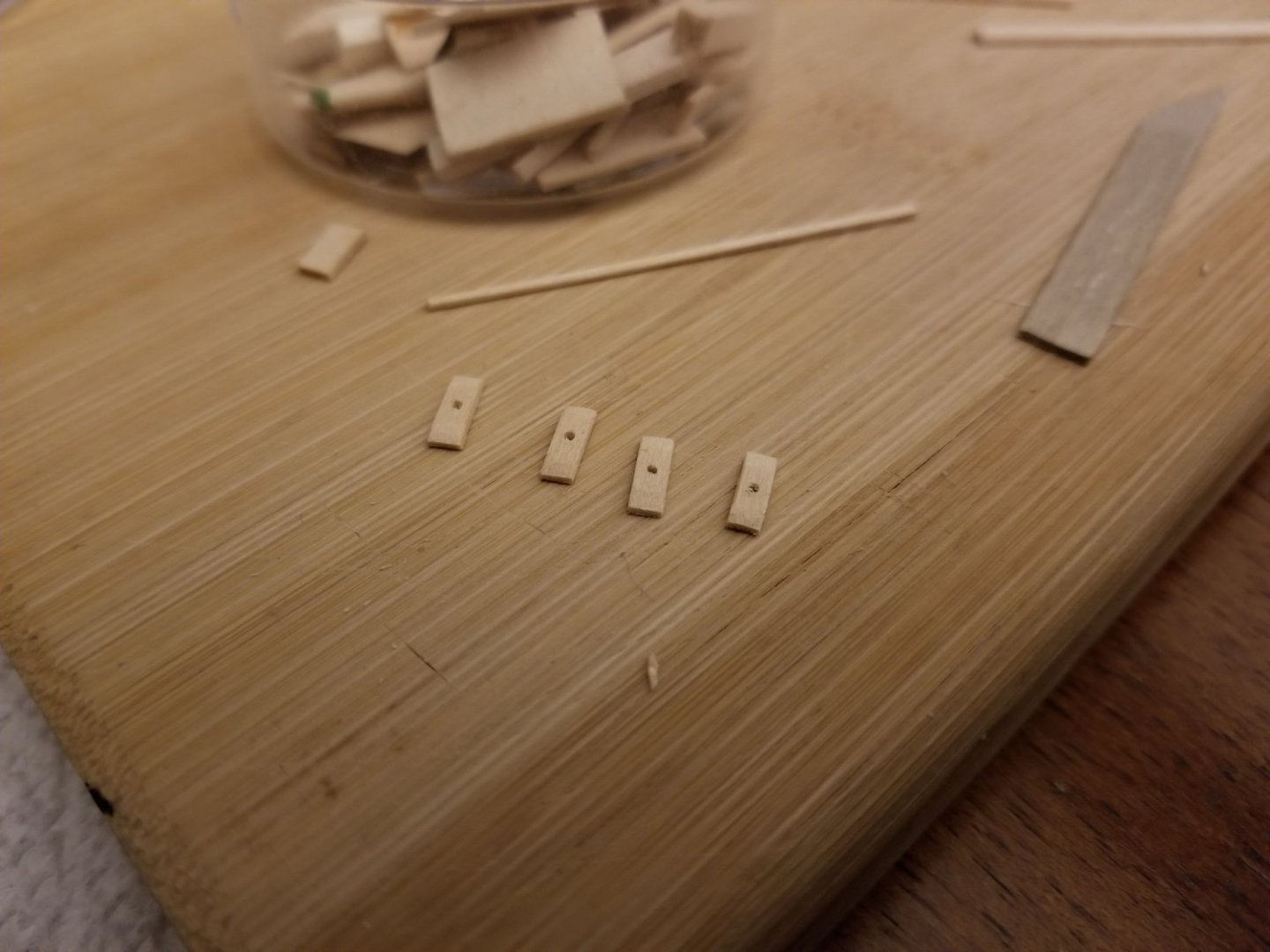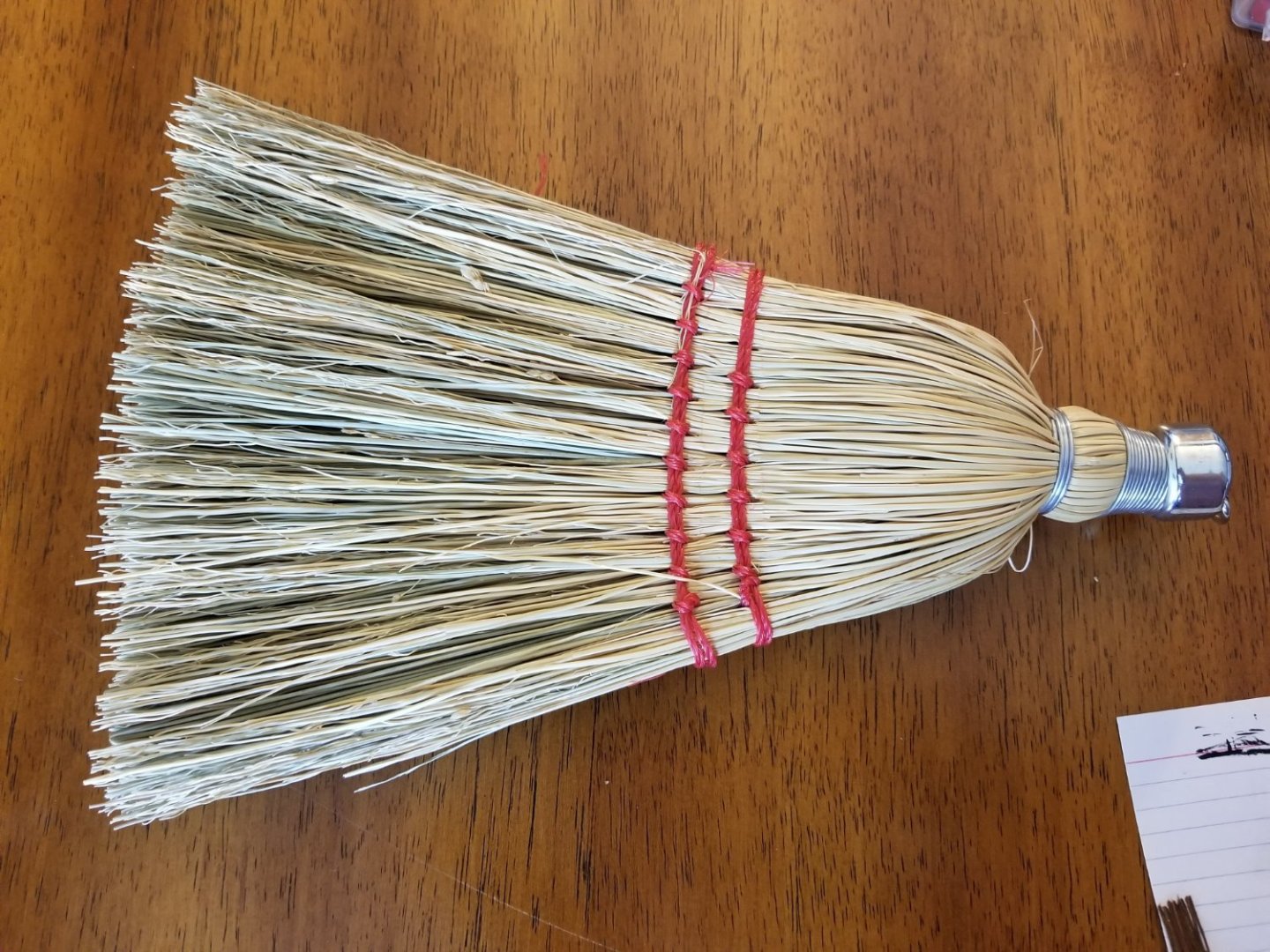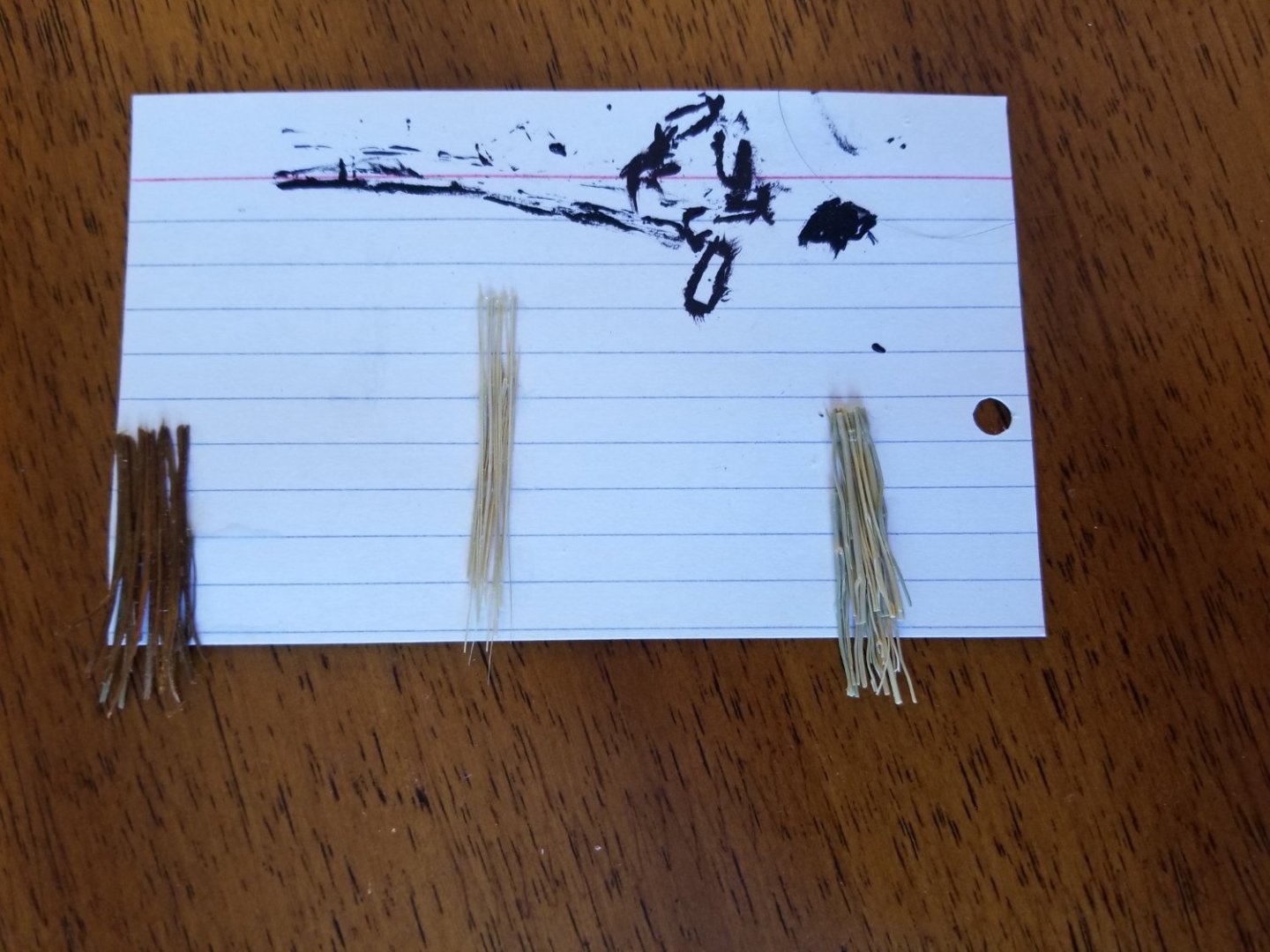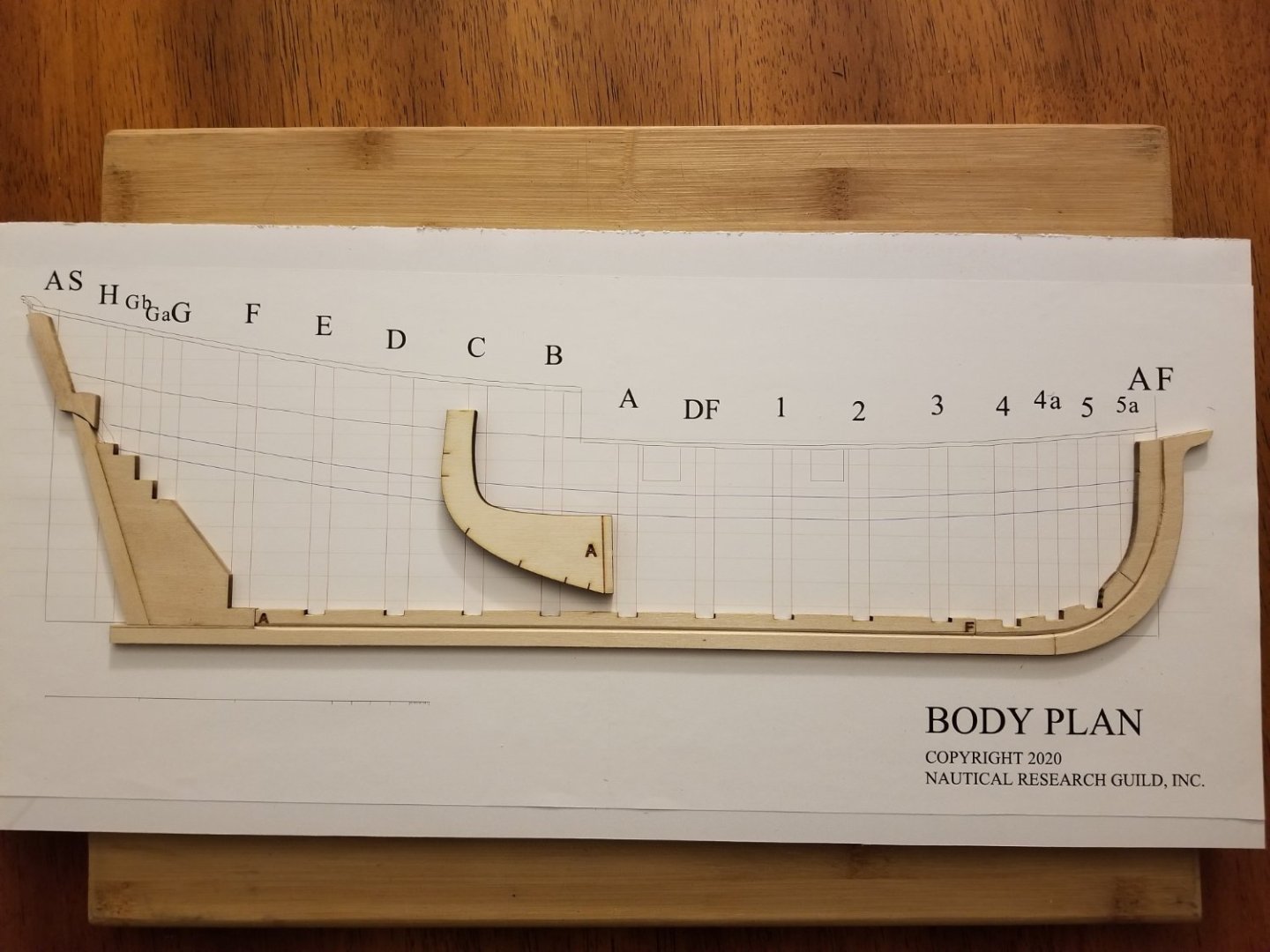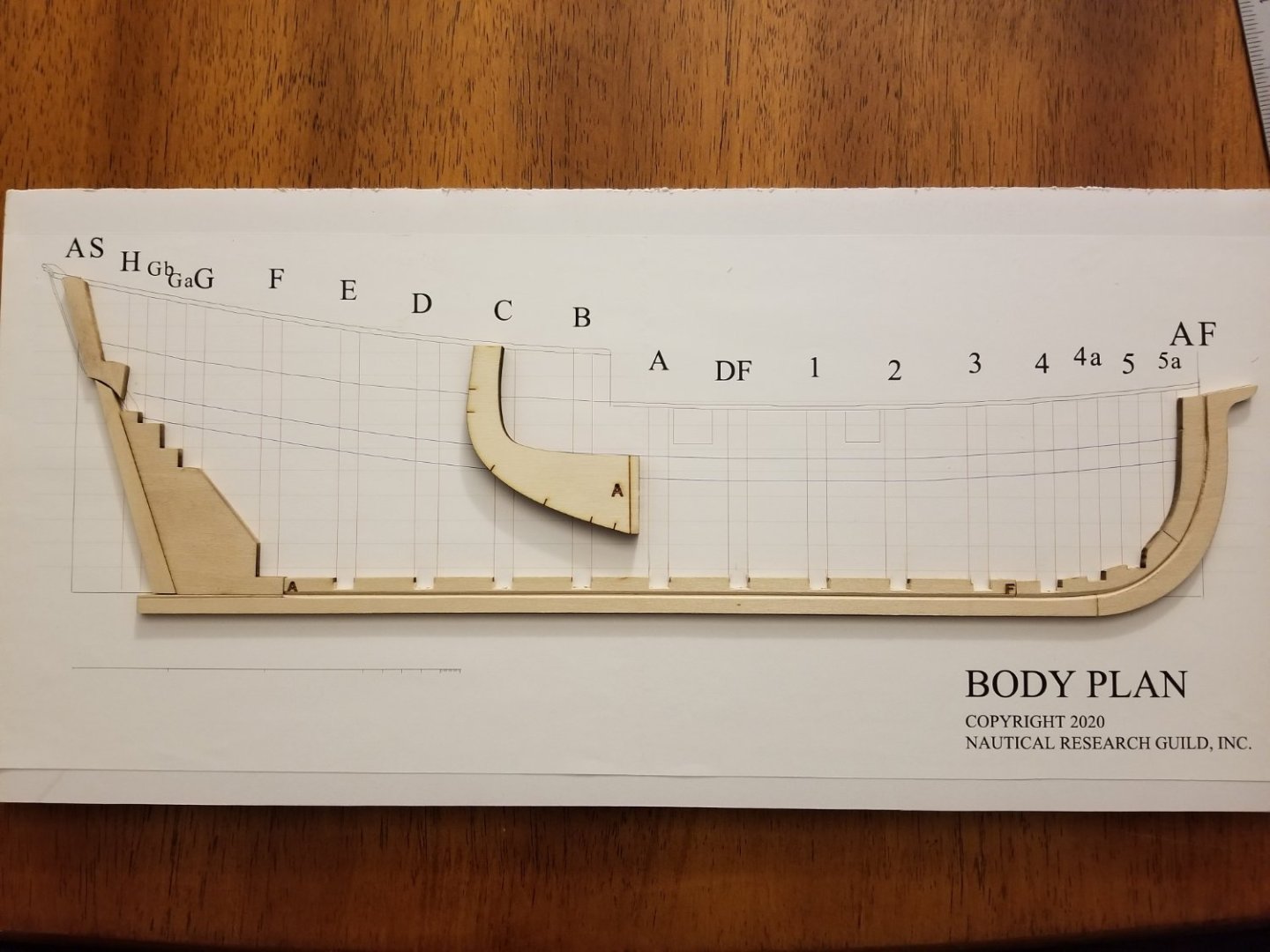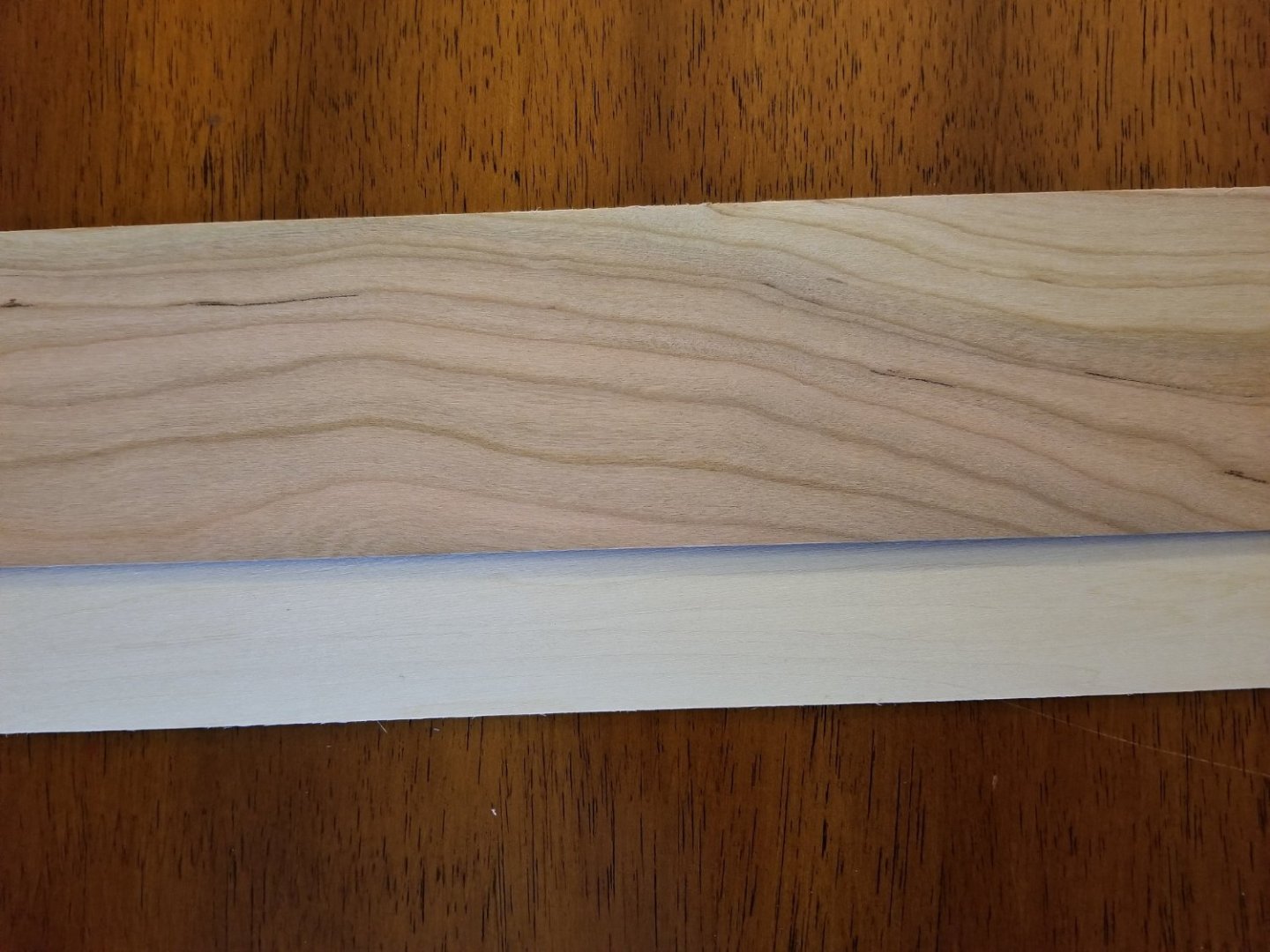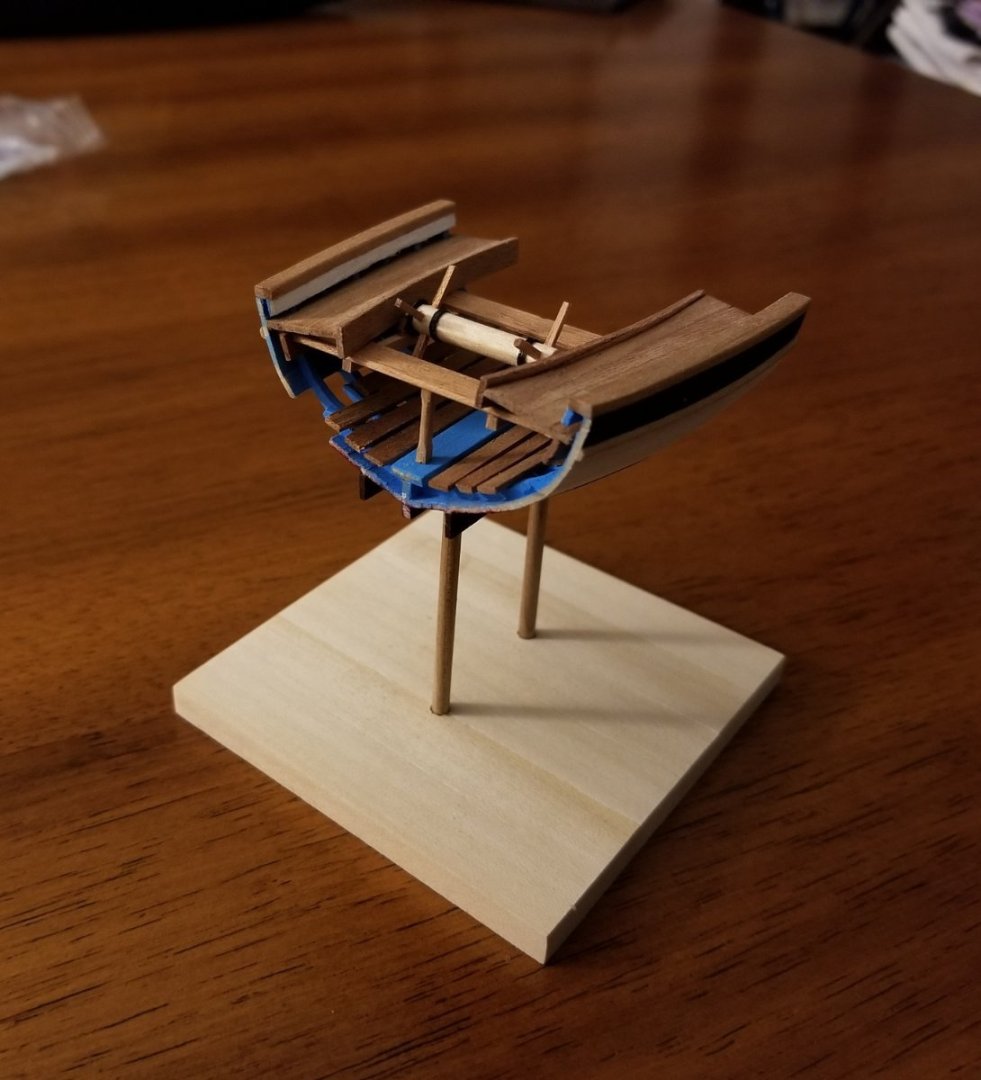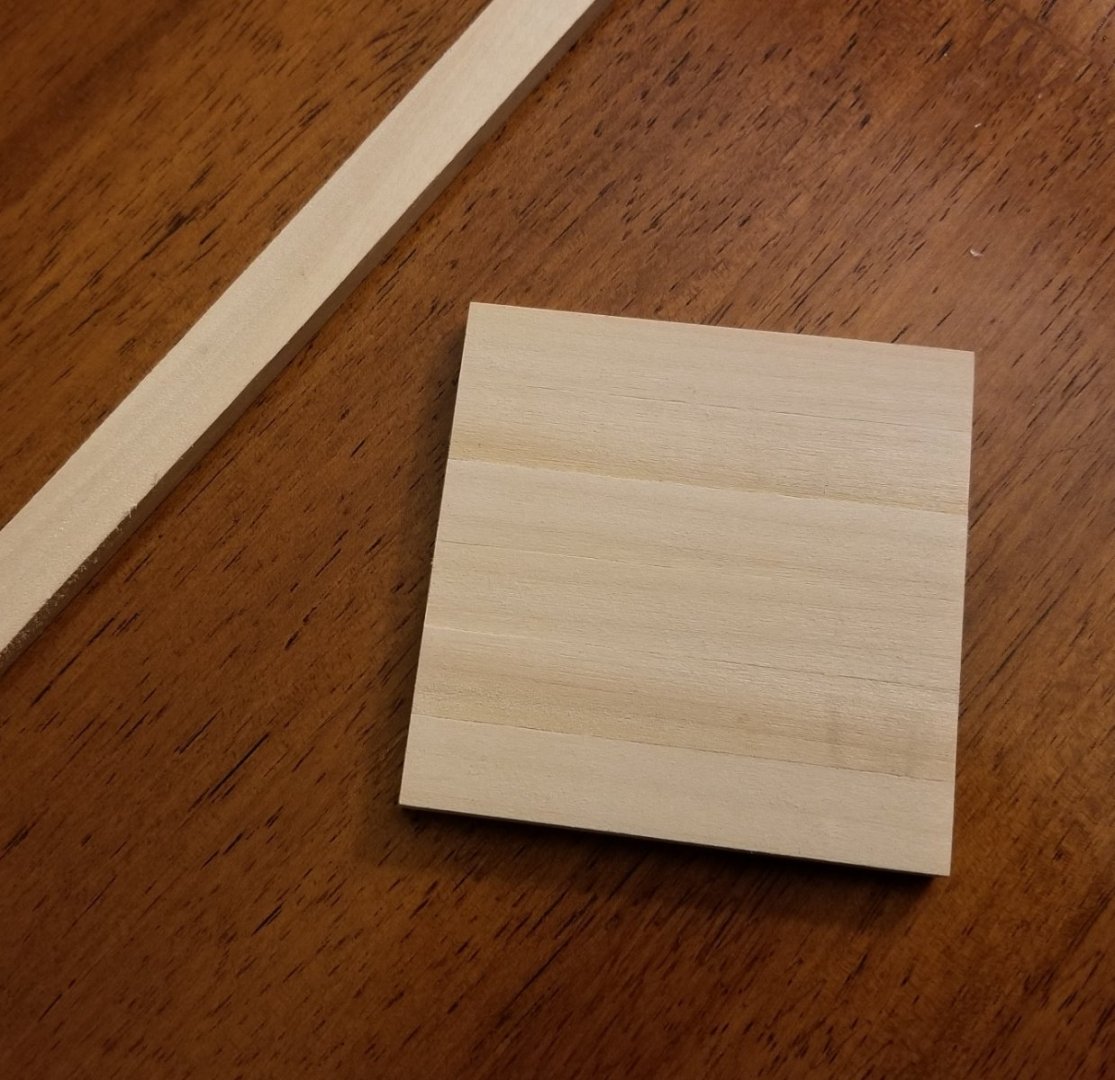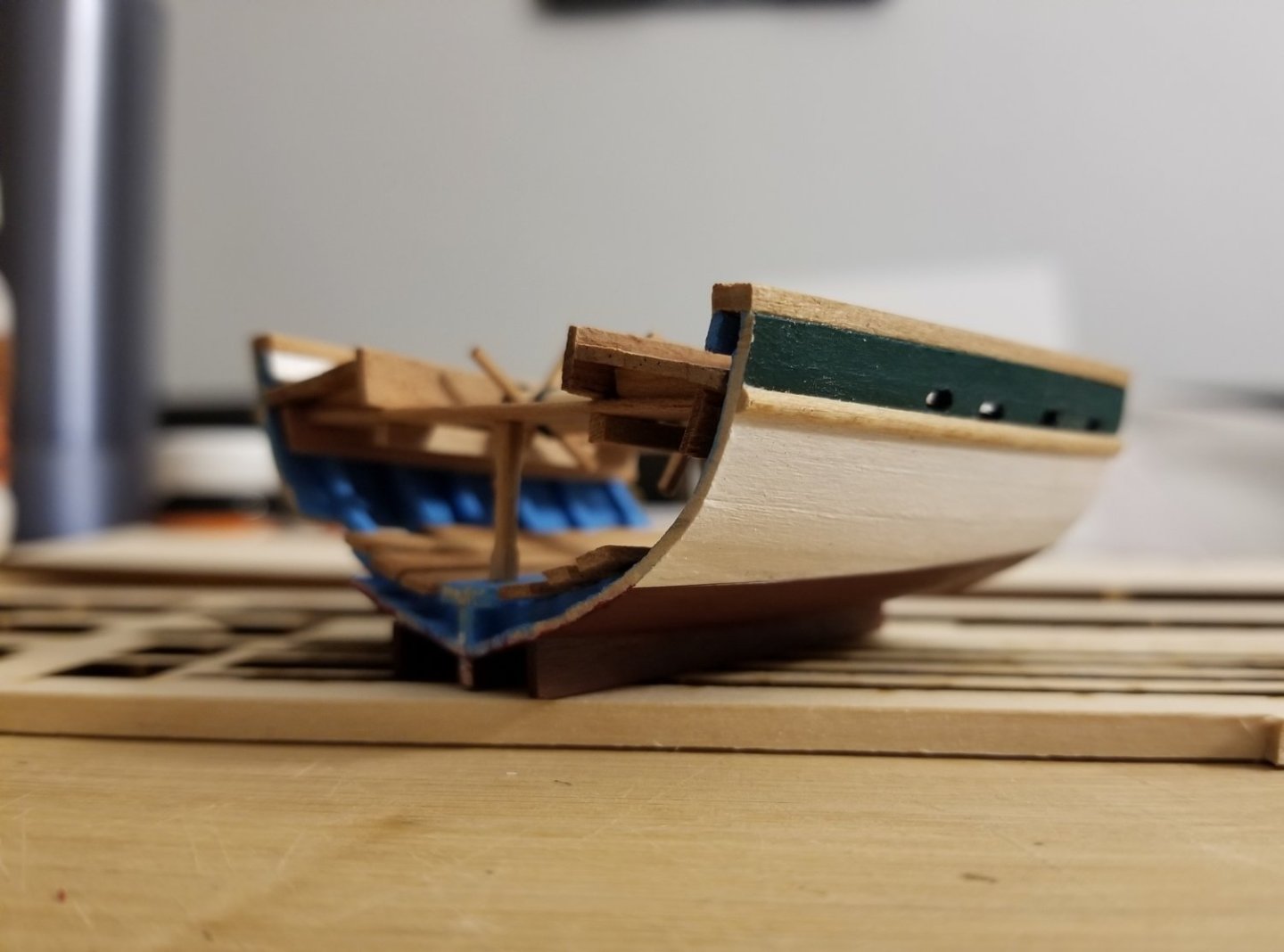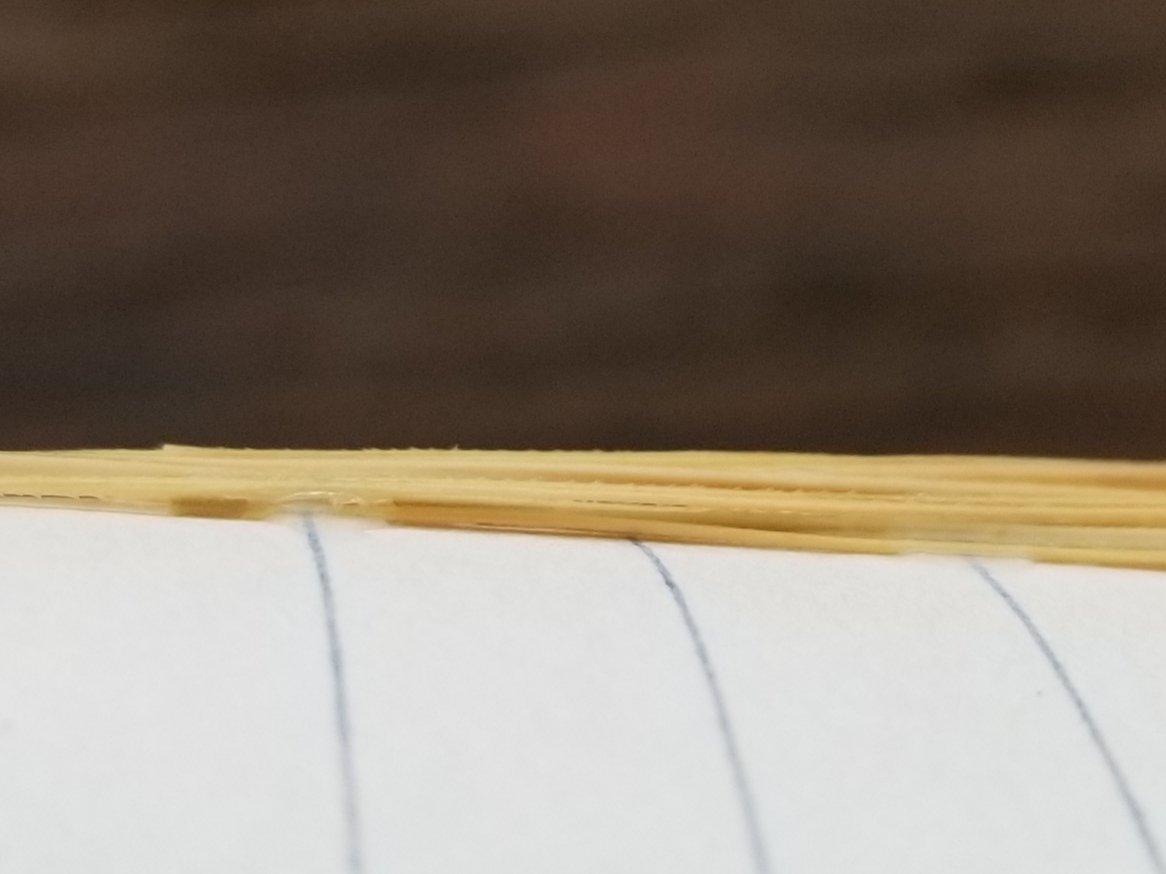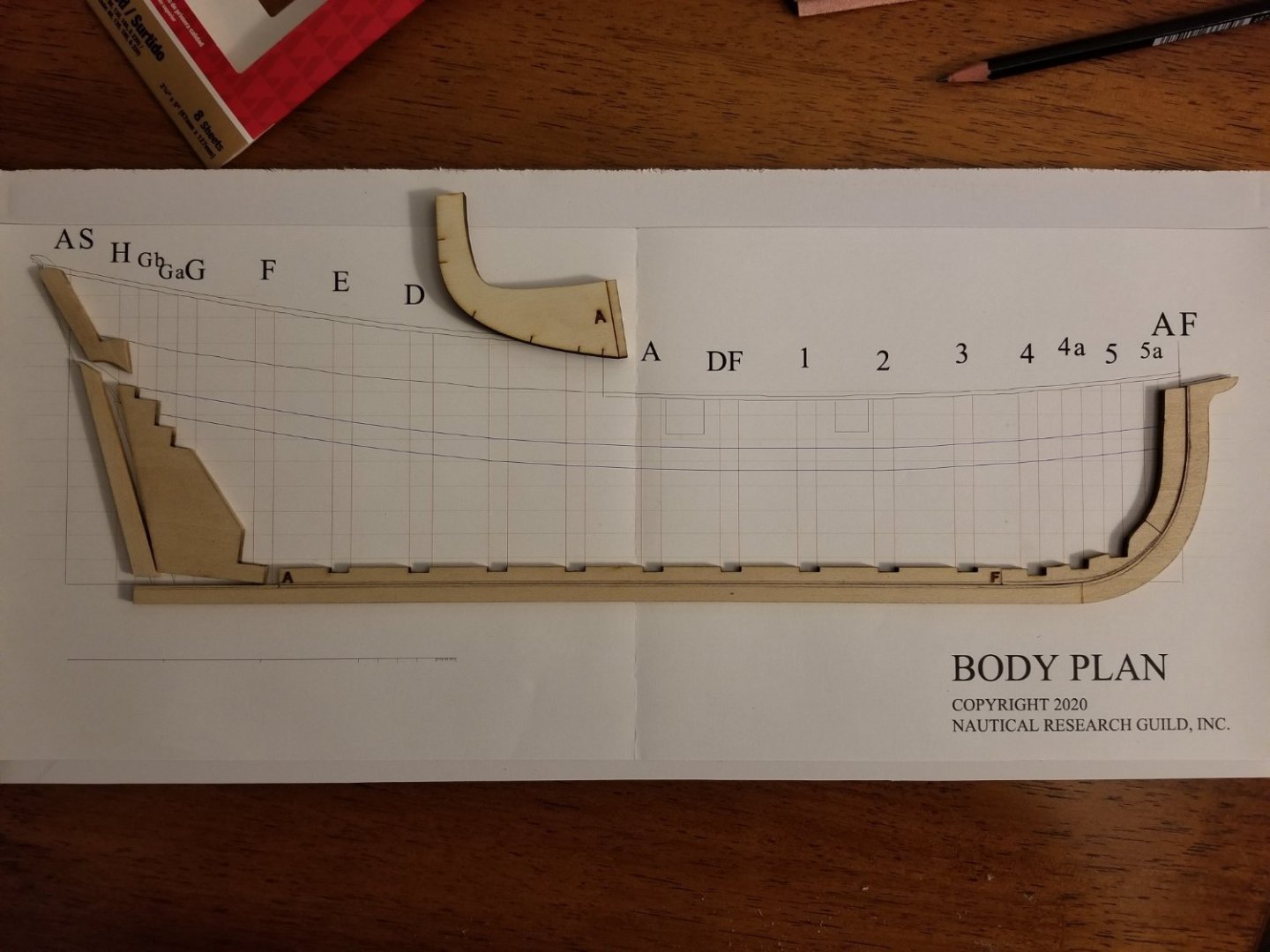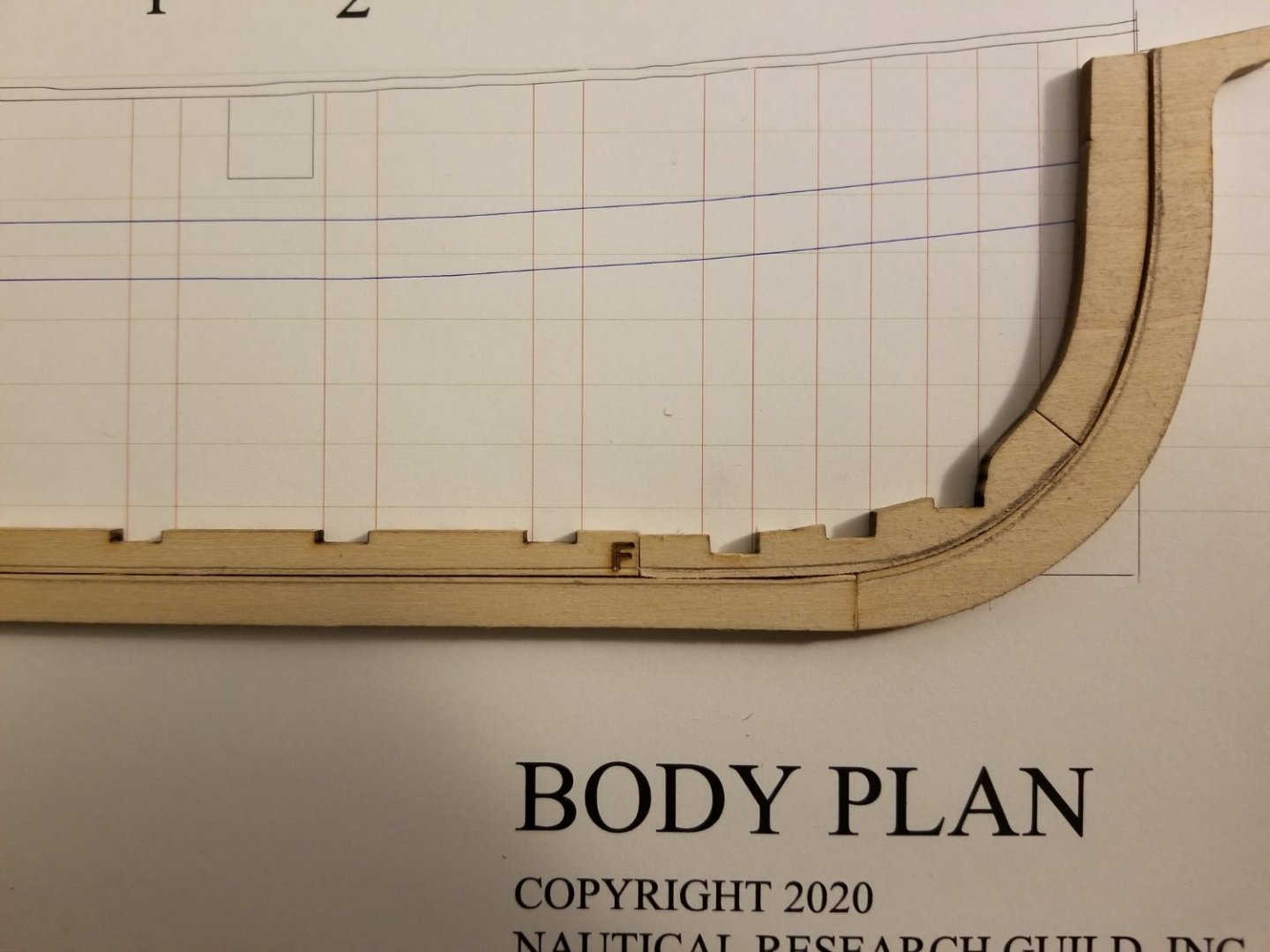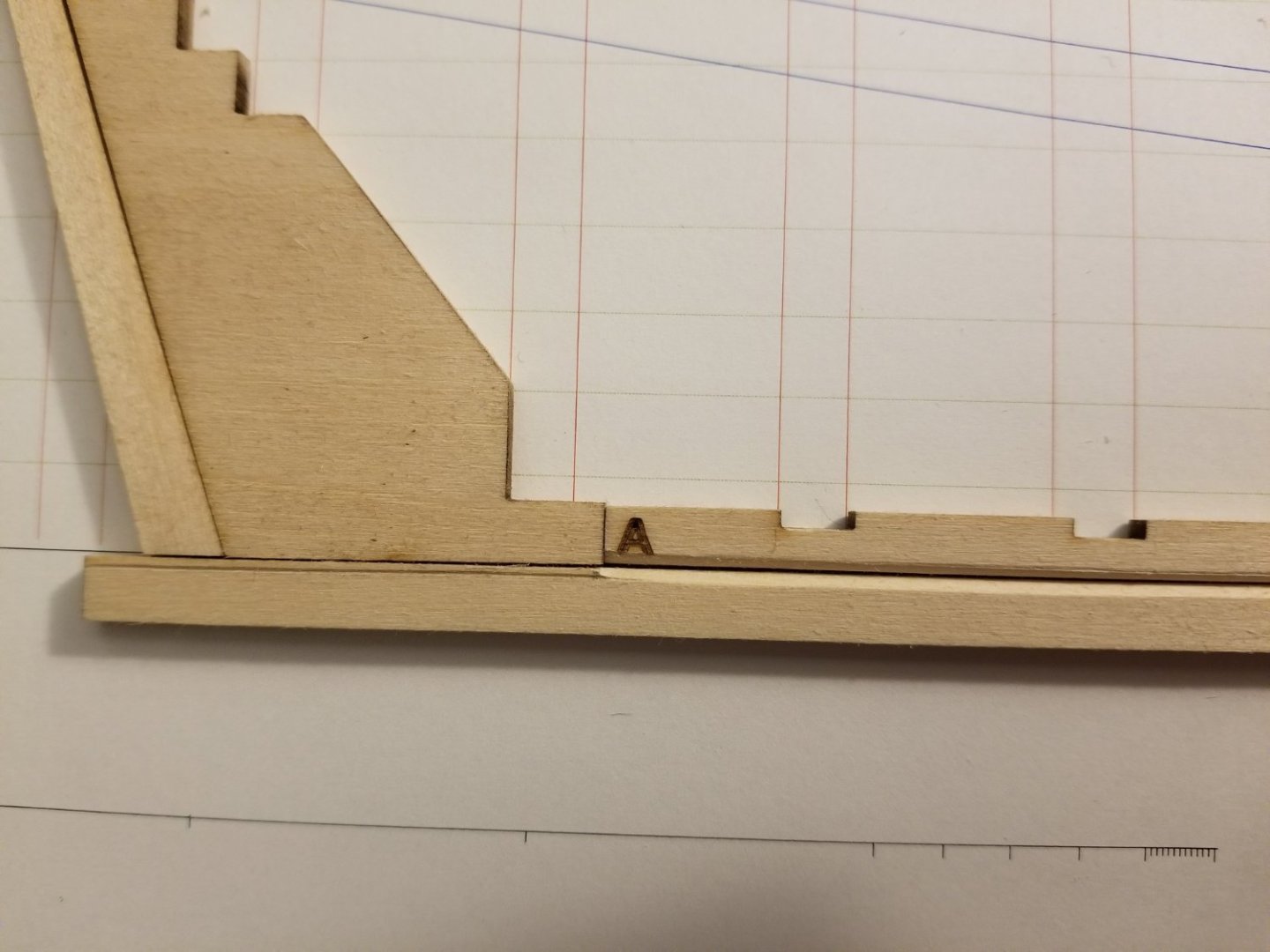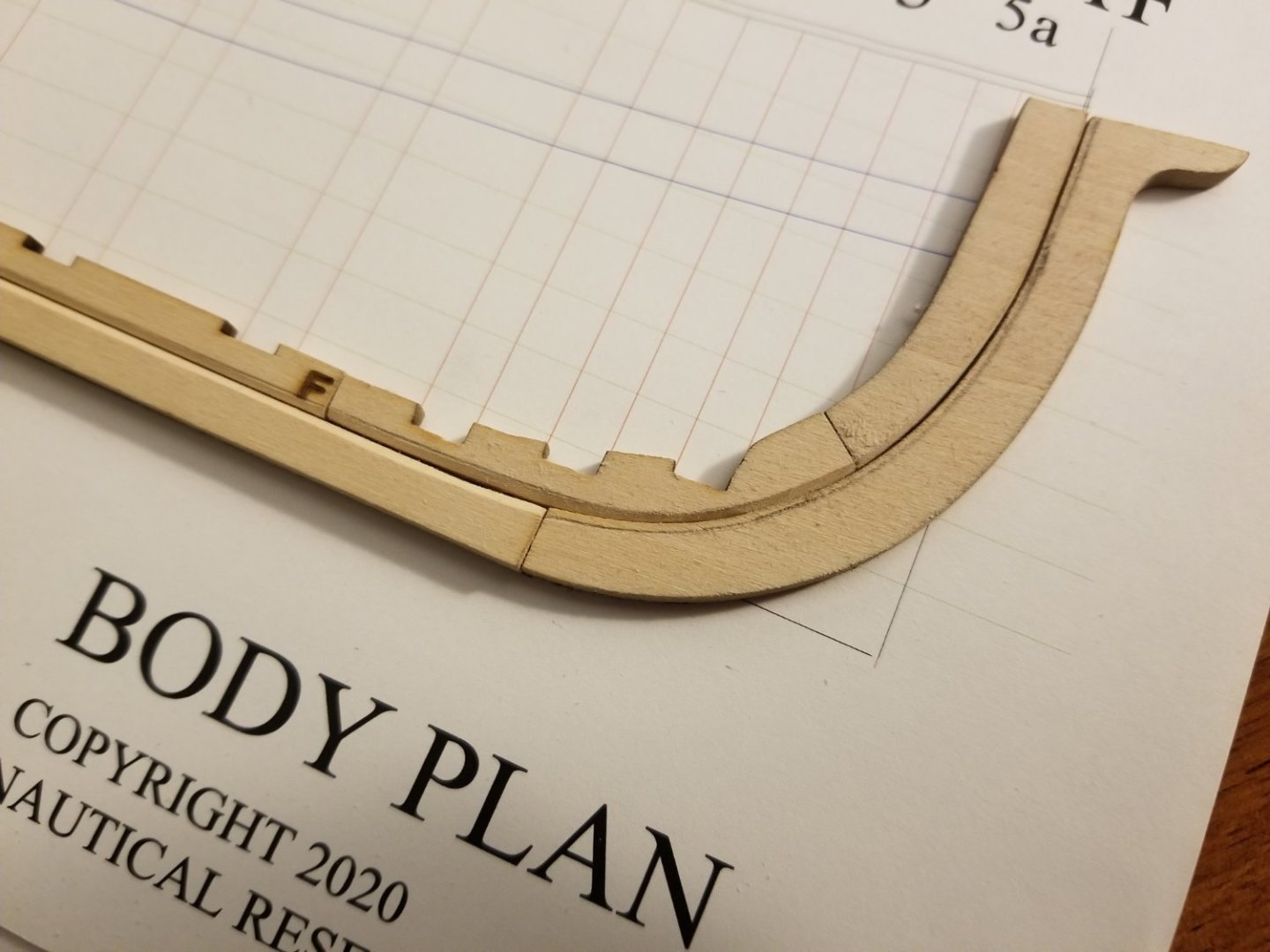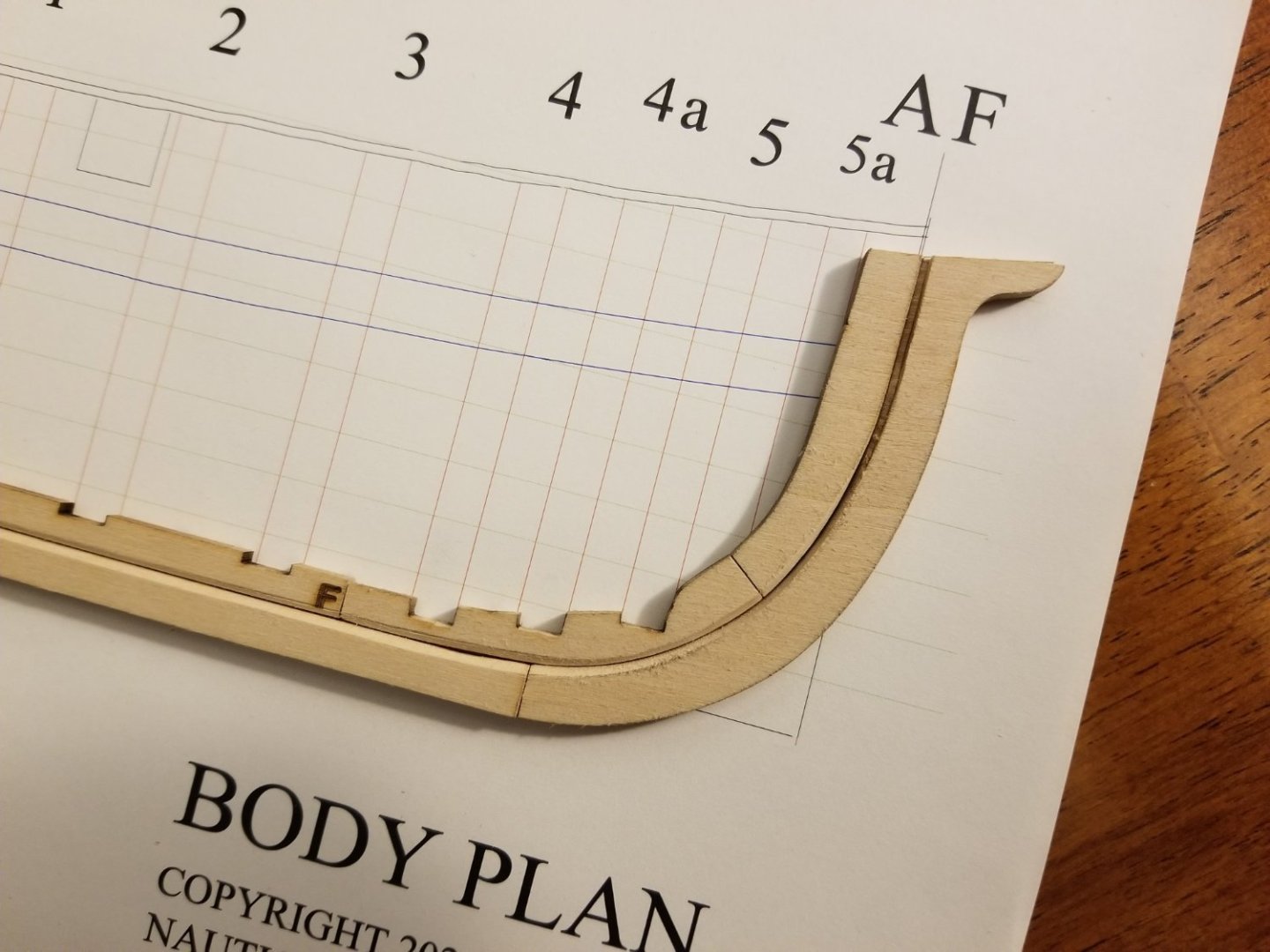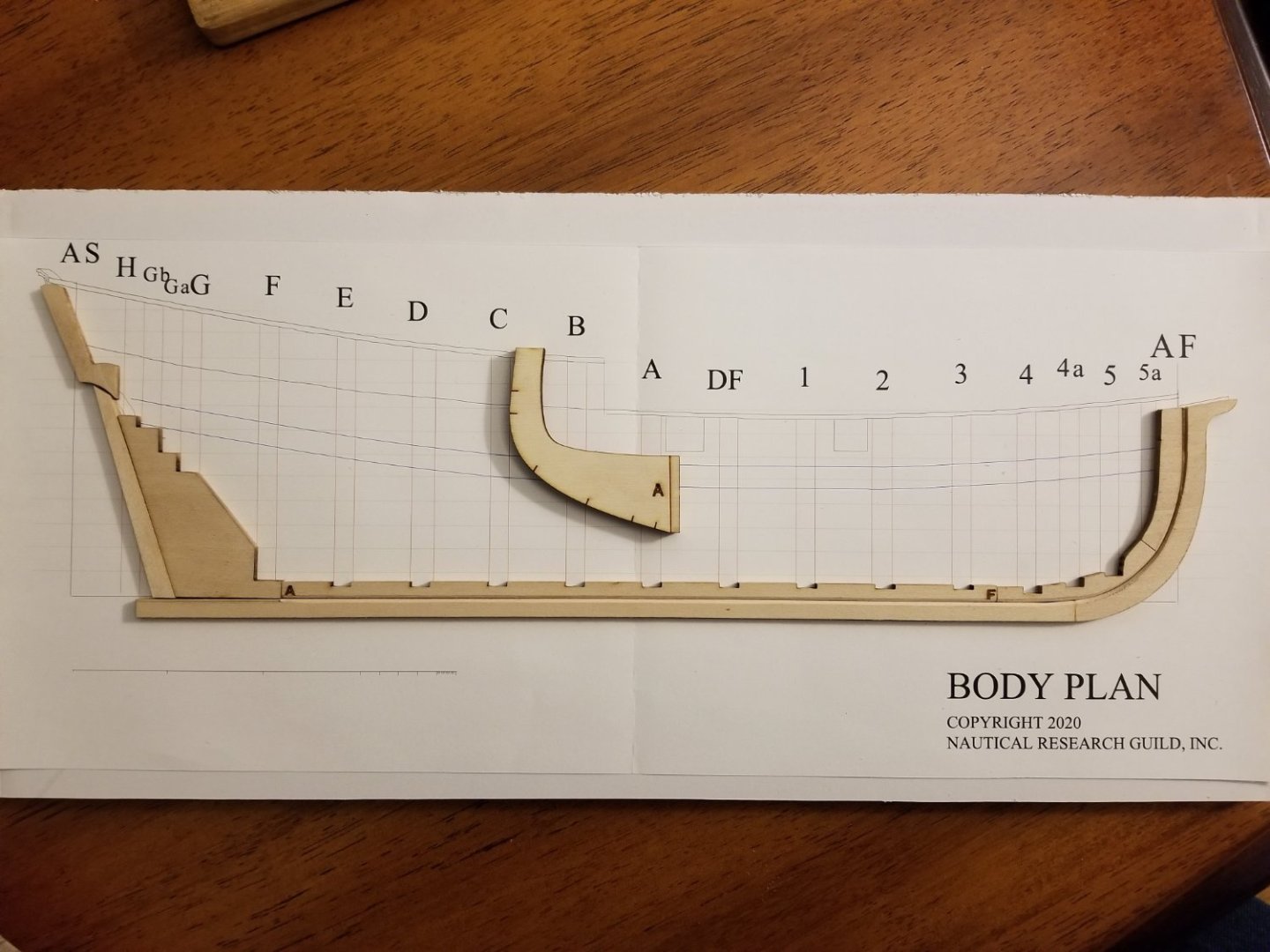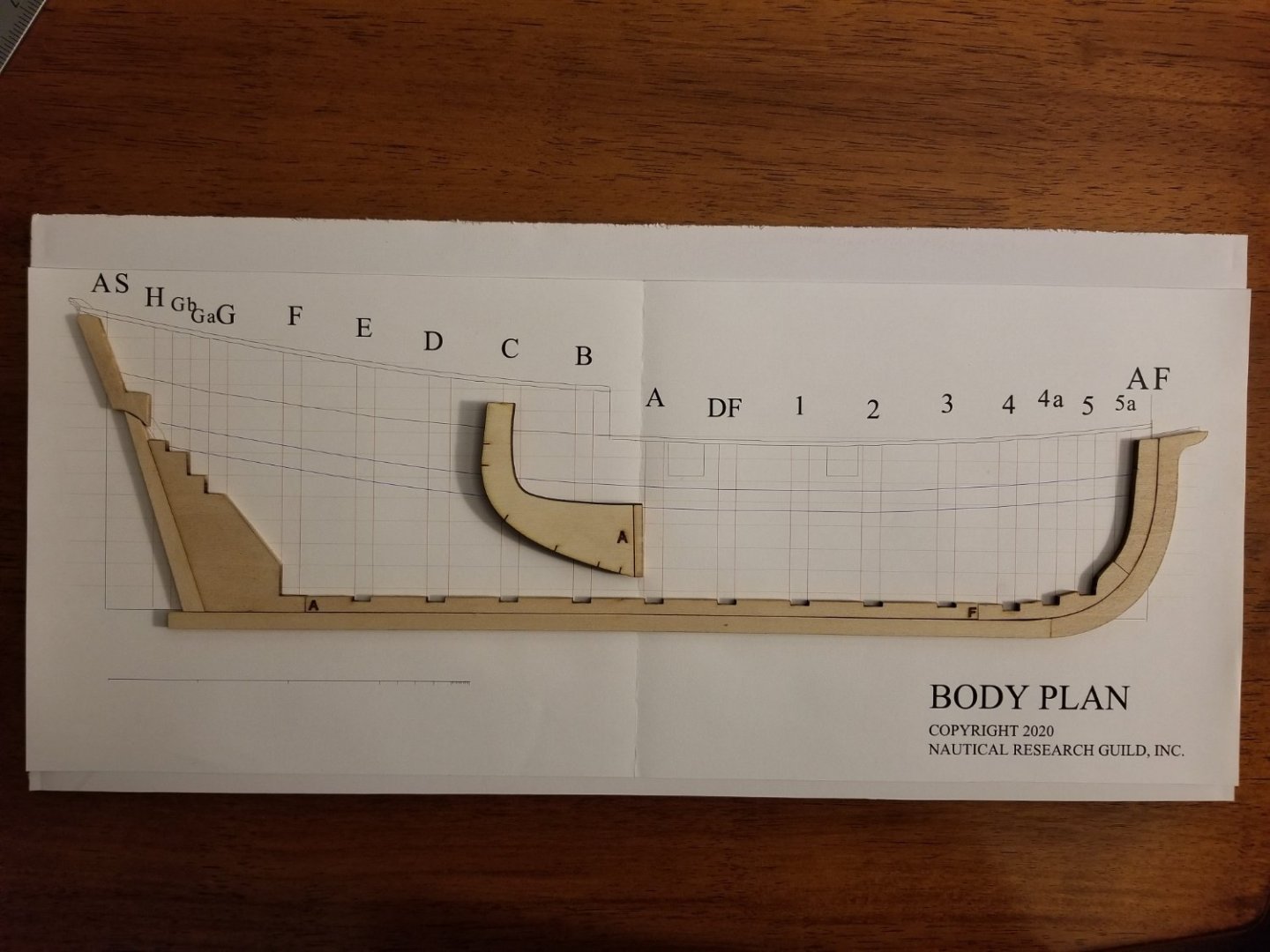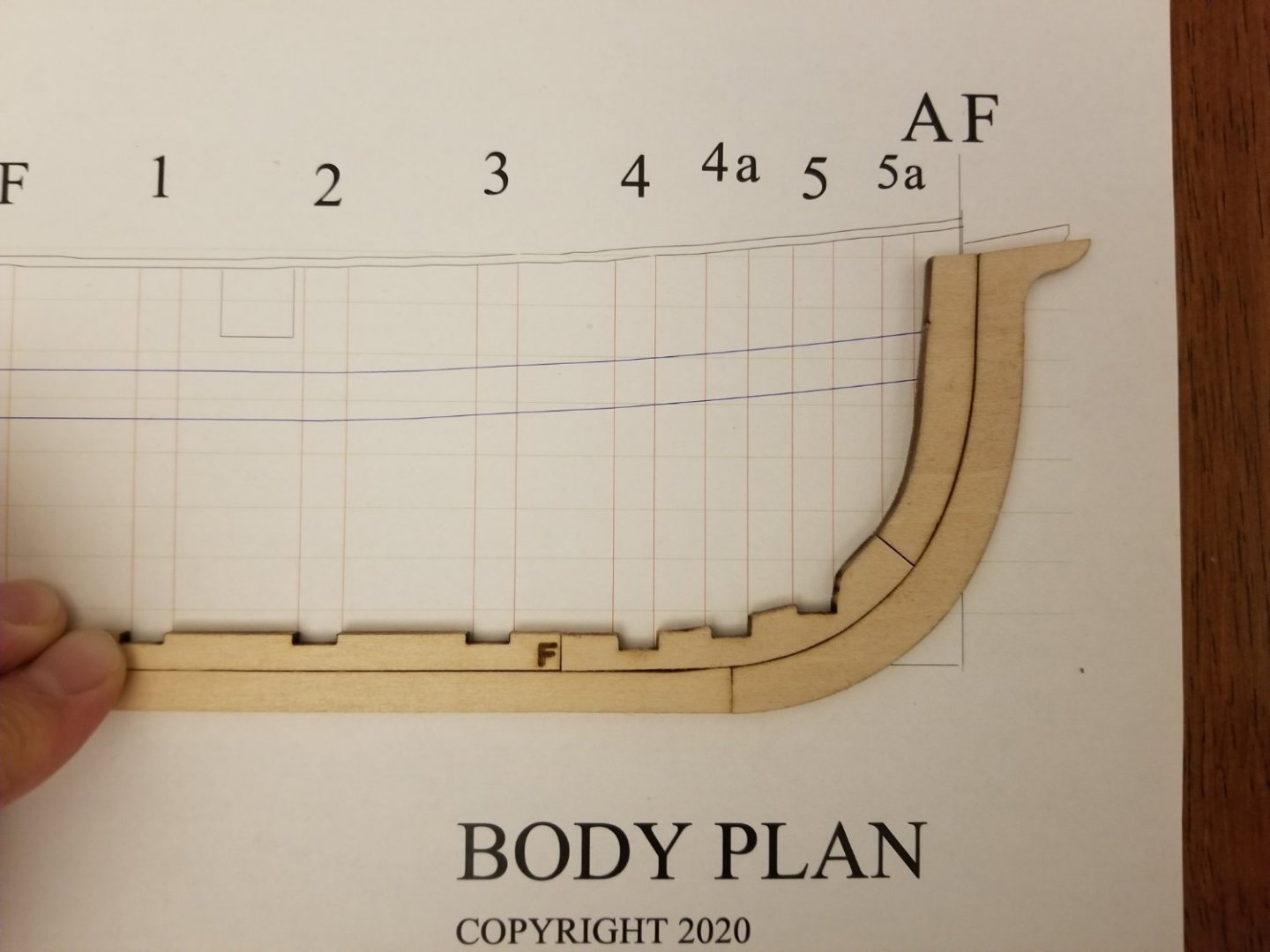-
Posts
1,309 -
Joined
-
Last visited
Content Type
Profiles
Forums
Gallery
Events
Everything posted by JacquesCousteau
-
Wow, that looks great! The whole concept is very imaginative, and you really pull it off. So many amazing details!
- 174 replies
-
- Waa Kaulua
- bottle
-
(and 1 more)
Tagged with:
-
Congratulations, looks great!
- 33 replies
-
- Bounty Jolly Boat
- Artesania Latina
-
(and 1 more)
Tagged with:
-
Thanks! This will be very helpful to watch out for whenever I manage to get back into my build. Good luck with attempt 2!
- 47 replies
-
I'm sorry to hear that, but I'm looking forward to seeing the new half-hull. As someone who is building their own half-hull (very very slowly), I have to ask: would you be at all willing to share what went wrong? It could be very helpful as a warning for others.
- 47 replies
-
Great start, looking forward to seeing it as you progress!
- 11 replies
-
- Skiff
- Midwest Products
-
(and 2 more)
Tagged with:
-
A little more progress. First, I began working on the tholes, which I cut from 1/32‐inch basswood. I then painted then a dark brown, and glued them in place. I'll add the thole pins later, once I'm sure I won't break them while doing other work. I then slightly shortened the mast base, chamfered the edges slightly, and applied sealer-varnish. I also started making a mast, based on dimension formulas in Francisco Oller and Vicente García-Delgado's Nuestra vela latina. I initially tried using a hardwood dowel, but it was very difficult to work, so I switched to basswood. At the moment, there's still additional work to do on the mast, like finishing the top and properly tapering it, but I'm not sure if I want to add it. As can be seen, with the mast in place, the model is a lot taller. Without rigging or the yard, which I'm not planning on making, or thd rest of the hull, the cross-section feels kind of overwhelmed by the long mast, which draws attention upward away from the hull to a largely featureless pole. I may just let the mast sit there for now to see if I get used to it, but I feel like I prefer leaving it off. The other option would be to do a stub mast, but that might look odd on such a small boat. Finally, as can be seen, I have not been able to successfully sand and scrape away the paint from the cut-aways. The end grain just absorbed the paint too deeply. This is an important lesson for the future. For this build, I need to decide which color to paint the exposed cut-aways.
-
As mentioned above, I was able to find a cheap straw broom to use for thatching material. The bristles are mostly under 1/32-inch diameter. I tested how the material works on card, alongside my prior tests. As can be seen, it looks pretty good--straighter and sturdier than the excelsior, and lacking the grip of the wheat awns. Now to get some double-sided tape and a matte adhesive/varnish spray, in order to make strips of thatching that I can attach and layer on the frame.
- 286 replies
-
Thank you for sharing, that's fascinating! There's a definite resemblance, especially in how the elevated prow isn't formed from an upturn in the wales, but is made of separate, wedge-shaped planks added above the rest of the hull planking. I'd be very curious to know if some sort of similar vessel was in use in Spain in the colonial period, and the design was transferred to Chapala where it developed into the Canoa, or if it's a case of convergent evolution. I do wonder what purpose the prominent upswept prow serves, on both vessels. Also, I should note that, while a very busy period at work has kept me from making progress on the Canoa build, I did go search for new thatching material. No luck at finding plumbing hemp, but I was able to get a cheap straw broom, the fibers of which are thinner than the wheat stalks I already had and closer to scale, so I should be able to start on the thatching soon.
- 286 replies
-
Congratulations, really great job! I'll definitely be revisiting this log once I get around to my own lobster smack.
- 62 replies
-
- Muscongus Bay Lobster Smack
- Model Shipways
-
(and 1 more)
Tagged with:
-
Thanks! So I think it would make the most sense to cut the notch nearly to the rabbet, with the understanding that the bulkhead will be beveled during fairing. I'm wondering if I should try to pre-bevel the foreward bulkheads a bit, although that runs the risk of really messing up the fairing.
- 82 replies
-
- half hull planking project
- half hull
-
(and 2 more)
Tagged with:
-
Work has been pretty hectic lately, so very little has progressed on any of my builds. A week ago or so, I glued the keel pieces together on the building board. And yesterday, I started deepening the notches. About half were very easy to cut out with a sharp exacto knife, but the other half were a lot harder and the building board took a few stabs. I think there may have been glue at the spots I was cutting there, which would be something to look out for. I was also able to adjust some of the notches to better align with the lines on the plans. I should note that the D frame lines on my plans are a bit wider than the other frame lines, so it will be a little tricky to align. One question that I haven't seen explicitly addressed in the instructions or other build logs: do the notches only get extended on the keelson, or also on the fore keelson, too? I already extended one of the notches on the fore keelson, but am debating how much I should extend the other two if at all. Finally, I made another order at Modelexpo, which included a sheet of 1/32‐inch-thick cherry (seen below with a comparison to the basswood sheet). I'm hoping to use it to plank above the wale to create a nice contrast, although the cherry is more heavily figured than I expected, so getting consistent planks may be a challenge. If I can only get a few, I might limit the cherry to just the quarterdeck or something.
- 82 replies
-
- half hull planking project
- half hull
-
(and 2 more)
Tagged with:
-
Very nicely done, congratulations!
- 13 replies
-
- Lowell Grand Banks Dory
- Model Shipways
-
(and 1 more)
Tagged with:
-
I know that Bluejacket has a particularly strong connection to Maine's maritime traditions and makes a lot of models of local boats. In line with that, a sailing Hampton Boat could be an interesting addition to the fleet--a small, two-masted, lapstrake-built, open vessel used for fishing. There's a good bit of information on them in Chapelle's The National Watercraft Collection. Personally my vote is for a relatively small model, as I find a lot of kit offerings to be too large given my limited space. A Hampton Boat at 1:24 would be pretty small, but that scale would still allow for a lot of interesting detail work, like adding fishing gear. Detail from plans shown on page 255 of The National Watercraft Collection: That said, I agree with the suggestions above for something from another region of the US, as so many existing kits are of boats from the central and northeast Atlantic coast. I second the comments for a Gulf Coast or San Francisco scow schooner, and for the CA Thayer or Wawona. I especially like @grsjax's suggestion for a Hawaiian sampan--what a fascinating vessel! And an interesting addition to American "traditional" vessels. A San Francisco felucca could also be another unusual American sailing vessel. Beyond those, I know that Bluejacket's focus is on American vessels, so I won't suggest anything from Latin America. A Biloxi schooner could make for an interesting model, and something a little different from the existing schooners that Bluejacket offers. On the smaller side of things, I also think that the 1883 Key West fishing smackee Jeff Brown would be a great option. At only 25 feet long between perpendiculars, a 1:24-scale model would be of a very manageable size while still allowing for fishing equipment and other detail work. The Jeff Brown is discussed, with plans, on pages 285-287 of Chapelle's The National Watercraft Collection. Interestingly, the Noank Historical Society also has a replica that was built in the 1960s, as the Jeff Brown was built in the Noank style. Site: https://eyh.cab.mybluehost.me/jeff-brown/ Although there are a few differences between the replica and the plans (the replica did away with the fish well and reversed the cockpit, if I remember correctly), I'd imagine that it would be possible to make a very detailed model, perhaps even plank-on-frame. Detail from plans shown on page 287 of The National Watercraft Collection: Looking forward to seeing what kits you add to the lineup!
-
I considered bare wood, but I already got some paint on it that I'd need to scrape off. In any case, I also really like how G.L.'s cross section of a fishing smack--an excellent and very unique build--has the "cut ends" highlighted in orange, as seen clearly in this post: Thank you! This has been a very fun little build, and I've learned a lot from it. I got a bit more work done on the stand. I don't think I'll be able to do much building over the next few weeks, so I wanted to get it to where I could at least put it on the mantle out of the way of things. I was able to make the vertical supports from a dowel, and drilled a hole in them and in the keel for a thin brass rod to hold the boat in place. I also drilled the holes in the base for the vertical supports. The verticals are over-long at the moment, but nothing is glued in place yet and I can cut them to size later. Still to do: finish the exposed ends and frames, add thole pins, add a mast if I decide to make one, and finish the base.
-
Progress was held up a bit when I accidentally bought the wrong type of tamiya masking tape--I needed the tape for curves. Once I got the right tape, I was able to paint a dark red below the waterline. I'm still working out how to paint the exposed frames and edges of the cross-section, although I'm now maybe leaning toward the same blue as the hull interior. As can be seen, the model is small enough that a lot of exterior hull details are obscured if it sits low on its eventual stand. I've bought some very thin brass rods in order to prop up the hull a few inches, although I'm concerned about drilling a mounting hole into the 1/16-inch thick keel. Given that the brass rods will be very thin in order to fit into such a narrow keel, I am thinking of just using a thin dowel to hold the model up, with just a small section of rod to solidify the model on the stand. In the meantime, I also got started on the base of the stand. After finding a 1/8x1/4 basswood strip, I cut a number of lengths and glued them together to make a 3-inch square base. It still needs finer sanding, and I might chamfer the edges a bit.
-
Well, it looks like I'll have to rethink using the awns. I varnished over my test thatching, and even with the brush-on varnish--which I suspect is thicker than a spray--the "grip" is still there. The little sawtooth pattern is kinda visible in the very low-quality photo below: This is a serious issue because it means the thatching would readily snag anything near it--rigging, sail, hands, etc--which could very easily knock the model to the floor. So, I'm going to test out the straw stem material. I may be able to cut it into more consistent widths, and a light wash might help even out the color. But if that doesn't work, or seems like more trouble than its worth, I may just bite the bullet and purchase the material I mentioned in an earlier post.
- 286 replies
-
Thank you! I think I'll just carefully carve them out with the exacto knife after the the keelson is glued to the keel, as the instructions suggest. I briefly considered extending the notches on the bulkheads themselves instead, but the plywood is really tough to cut, and in any case I need to move some keelson notches slightly to the side when extend them for alignment.
- 82 replies
-
- half hull planking project
- half hull
-
(and 2 more)
Tagged with:
-
The rabbet was not as difficult as I thought it would be (unless I've actually ruined it). The instructions were fairly detailed, although some detail photos are a little blurry. I also checked Toni Levine's original build log, as well as a lot of other build logs, which were very helpful in making sure I understood what to do. First things first, I used a compass to mark 1/32 of an inch on the keel, keelson, stem, and the back half of the fore keelson. I found it helpful to lightly press the compass into the wood to mark out a groove I later drew over with pencil. I then drew out the approximate curve as the rabbet narrows along the fore half of the keelson and eventually disappears on the stemson. Then I began to carve the rabbet on the keelson. This cut will be hidden by planking, so I figured it was a good opportunity to try cutting the rabbet with an exacto blade. It worked all right, but was a bit uneven and had some slight gouges. Sanding it a little smoothed it out, though. I found it easiest and most consistent, as I moved ahead with the keel, fore keelson, and stemson rabbets, to use the knife for initial carving but to purposely leave space, and then to finish it with sanding. The long flat parts--keel and keelson--were best sanded against a simple sheet of sandpaper placed on a flat surface, which seemed to work well to get a consistent angle. I just had to make sure not to sand away the keel's slight rise at the bow, or after the aft marking. Meanwhile, I used sanding sticks for the curved parts. As can be seen, I was soon finished except for the stem, the trickiest part of the rabbet to make. Aft detail showing end of rabbet: Bow prior to making the stem rabbet: For the stem, I started by marking where the stemson rabbet disappears. Above that mark, I cut a mortise (essentially a right-angled cutout). Below it, I used a combination of the exacto blade and sanding sticks to shape a curving rabbet, which reaches a 45-degree angle by the time it meets the keel. Below you can see the results: And here's the complete rabbet. Hopefully I haven't somehow ruined it--the whole time I was carving it, I somehow had Elmer Fudd singing "kill the wabbit" to the tune of "Ride of the Valkyries" stuck in my head. Weird associations the mind creates! Next up to glue down the backbone pieces.
- 82 replies
-
- half hull planking project
- half hull
-
(and 2 more)
Tagged with:
-
A tiny bit of progress: First, I ended up trimming back the aft end of the fore keelson so the slots better align with the markings. There will still need to be some shaping, as the distance between a couple slots doesn't quite match the plans--the aftmost slot on the fore keelson is especially off--but it should work better now. I also finally got a building board. I had originally planned on going to an office supply store a short walk from home, but it closed unexpectedly while I was away. I eventually found some in a target. It was only 1/8zinch thick, so I doubled it up. I then trimmed my plans to the right size. I still have to glue them down, but I'm ready to start on the rabbet.
- 82 replies
-
- half hull planking project
- half hull
-
(and 2 more)
Tagged with:
About us
Modelshipworld - Advancing Ship Modeling through Research
SSL Secured
Your security is important for us so this Website is SSL-Secured
NRG Mailing Address
Nautical Research Guild
237 South Lincoln Street
Westmont IL, 60559-1917
Model Ship World ® and the MSW logo are Registered Trademarks, and belong to the Nautical Research Guild (United States Patent and Trademark Office: No. 6,929,264 & No. 6,929,274, registered Dec. 20, 2022)
Helpful Links
About the NRG
If you enjoy building ship models that are historically accurate as well as beautiful, then The Nautical Research Guild (NRG) is just right for you.
The Guild is a non-profit educational organization whose mission is to “Advance Ship Modeling Through Research”. We provide support to our members in their efforts to raise the quality of their model ships.
The Nautical Research Guild has published our world-renowned quarterly magazine, The Nautical Research Journal, since 1955. The pages of the Journal are full of articles by accomplished ship modelers who show you how they create those exquisite details on their models, and by maritime historians who show you the correct details to build. The Journal is available in both print and digital editions. Go to the NRG web site (www.thenrg.org) to download a complimentary digital copy of the Journal. The NRG also publishes plan sets, books and compilations of back issues of the Journal and the former Ships in Scale and Model Ship Builder magazines.




